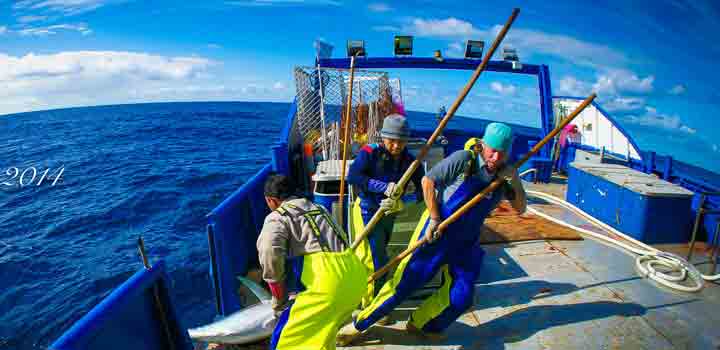Here at Stormline, we’ve build a solid reputation for offering some of the hardiest fishing oilskins in the UK. It’s what we’re passionate about.
But recently, we launched a new kind of fishing oilskin and it got us thinking. We all recognise those old-fashioned, black and white photographs of a stocky fisherman standing next to their catch, wearing bibs, braces and floppy hats. But what’s the story behind these garments, and how have they evolved over the centuries? And more importantly, how is that going to impact commercial fishing in the future?
Well, we did some research and discovered some surprisingly interesting stuff.
Check out our new Trade & Wholesale section – Get bulk discounts on professional fishing oilskins.
It all started in New Zealand
In the late nineteenth century, fisherman would protect themselves and their clothing by smearing their garments in oil, helping to keep them warm and dry.
With the tough weather conditions of New Zealand, however, something sturdier was needed. In Britain, you could already purchase oil-protected clothing for seasonal hunting (think winter in the Scottish Highlands). So fisherman Edward Le Roy had a plan. He took inspiration from English-countryfile fashion and put together the first fishing oilskins that would help keep men dry on coasters.
To begin with, Le Roy made fishing oilskins using natural sources like linseed oil and wax. He’d then paint this concoction directly onto his clothing and test it out on foul-weather conditions.
There’s a reason fishing oilskins are traditionally yellow
The result were things like aprons and oil pants – now a regular fixture on commercial boats across the globe.
However, it was precisely this unique combination of linseed oil and wax that gave fishing oilskins their distinctive yellow colour. The benefits were twofold. The clothing stayed nice and dry, but the bright colour palette was also a fantastic safety innovation. After all, it was much harder to lose someone on deck, at night, when they were dressed almost exclusively in yellow.
The garments proved so popular they also took Australia by storm, with entrepreneurs like Thomas Edward Pearson creating waterproof clothing for horseback riding and farming. Le Roy’s oilskins also found their way back to the UK and were used almost exclusively for commercial fishing. All within a matter of a few short years.
Fishing oilskins in the UK
A lot has changed since fishing oilskins were first introduced to commercial fishing in the 19th century. But we like to think many of the principles are exactly the same. Waterproof clothing needs to be durable, adaptable and – most of all – easy to use, regardless of the weather.
We owe a lot to people like Edward Le Roy. So, if interested in learning more about our heritage and what we do best, follow us on Twitter and see what’s happening.
